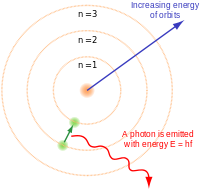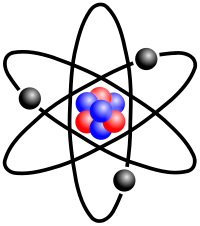We know that the earth has a north and a south pole. This is the line which points the direction of the earth's magnetic field. This runs at right angles (perpendicular) to the east/west line of the sun. Of course, because the earth "spins" or revolves on its axis (north/south) this perpendicular line (east/west) changes over teh length of a day (one revolution).
Experiments can prove (unless I am wrong), that a mast, which is an electrical conductor, which is insulated from the ground, will create an electric field (potential difference) when the top of the mast is pointing directly away from the sun, i.e. at midnight. That is away from the direction of maximum mass. There are two factors at work; the energy streaming from the sun, and the mass of the earth and the sun combined.
Again, if I am right, there will be an electric field pointing directly away (at right angles) from the mast.
The same thing will be happening inside the atom, and inside the proton and the neutron, and any parts (quarks) of the proton and neutron, only it will be happenich a lot more rapidly that once every 24 hours.

An animation of the nuclear force (or residual strong force) interaction between a proton and a neutron. The small colored double circles are gluons, which can be seen binding the proton and neutron together. These gluons also hold the quark-antiquark combination called the pion together, and thus help transmit the a residual part of the strong force even between colourless hadrons. Anticolors are shown as per this diagram. For a larger version, click here
Voltage
Voltage, otherwise known as electrical potential difference or electric tension (denoted ∆V and measured in volts, or joules per coulomb) is the potential difference between two points — or the difference in electric potential energy per unit charge between two points.[1] Voltage is equal to the work which would have to be done, per unit charge, against a static electric field to move the charge between two points. A voltage may represent either a source of energy (electromotive force), or it may represent lost or stored energy (potential drop). A voltmeter can be used to measure the voltage (or potential difference) between two points in a system; usually a common reference potential such as the ground of the system is used as one of the points. Voltage can be caused by static electric fields, by electric current through a magnetic field, by time-varying magnetic fields, or a combination of all three.[2][3]
Periodic Table of Elements
Electric charge
Electric charge is a physical property of matter that causes it to experience a force when near other electrically charged matter. Electric charge comes in two types, called positive and negative. Two positively charged substances, or objects, experience a mutual repulsive force, as do two negatively charged objects. Positively charged objects and negatively charged objects experience an attractive force. The SI unit of electric charge is the coulomb (C), although in electrical engineering it is also common to use the ampere-hour (Ah). The study of how charged substances interact is classical electrodynamics, which is accurate insofar as quantum effects can be ignored.
The electric charge is a fundamental conserved property of some subatomic particles, which determines their electromagnetic interaction. Electrically charged matter is influenced by, and produces, electromagnetic fields. The interaction between a moving charge and an electromagnetic field is the source of the electromagnetic force, which is one of the four fundamental forces (See also: magnetic field).
Twentieth-century experiments demonstrated that electric charge is quantized; that is, it comes in multiples of individual small units called the elementary charge, e, approximately equal to 1.602×10−19 coulombs (except for particles called quarks, which have charges that are multiples of ⅓e). The proton has a charge of e, and the electron has a charge of −e. The study of charged particles, and how their interactions are mediated by photons, is quantum electrodynamics.


Hall effect
The Hall effect is the production of a voltage difference (the Hall voltage) across an electrical conductor, transverse to an electric current in the conductor and a magnetic field perpendicular to the current. It was discovered by Edwin Hall in 1879.[1]
The Hall coefficient is defined as the ratio of the induced electric field to the product of the current density and the applied magnetic field. It is a characteristic of the material from which the conductor is made, since its value depends on the type, number, and properties of the charge carriers that constitute the current.
Beta decay
An unstable atomic nucleus with an excess of neutrons may undergo β− decay, where a neutron is converted into a proton, an electron and an electron-type antineutrino (the antiparticle of the neutrino):
- n → p + e−
+ ν
e
This process is mediated by the weak interaction. The neutron turns into a proton through the emission of a virtual W− boson. At the quark level, W− emission turns a down-type quark into an up-type quark, turning a neutron (one up quark and two down quarks) into a proton (two up quarks and one down quark). The virtual W− boson then decays into an electron and an antineutrino.
Beta decay commonly occurs among the neutron-rich fission byproducts produced in nuclear reactors. Free neutrons also decay via this process. This is the source of the copious amount of electron antineutrinos produced by fission reactors.